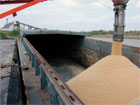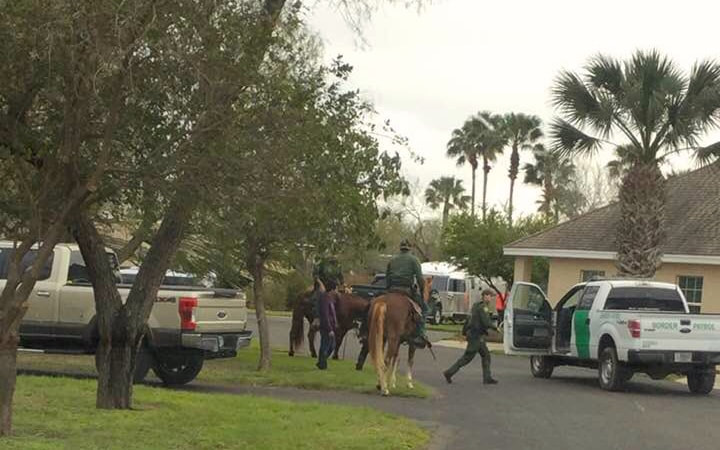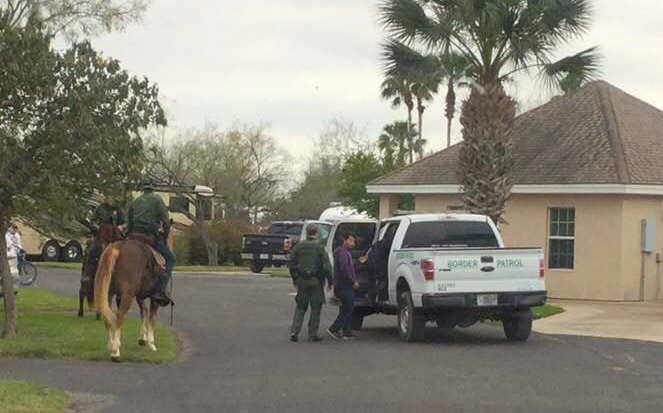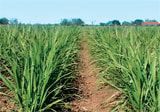|
For a variety of reasons, it was time to trade in the truck. We loved the Chevrolet Silverados and decided to stick with that model. We upgraded to a 2016 and are in love with our new wheels. There are so many bells and whistles that it'll take us a month to figure out what all the buttons are for! We're not thrilled with the color - black - but it's used, so we didn't have much of a choice. All in all, though, it's a great truck and will last a very long time.
0 Comments
 Sage Monroe - 2007-2019 We had the heartbreaking task of saying goodbye to our beloved Sage today. Sage has been a part of our lives since we first met her in 2011. She stole my heart the minute I saw her and her Daddy was not far behind. Through the years, Sage has been at my side through good times and bad. She was there when we expanded our four-legged family, and she was there to say goodbye, as we lost them. She learned how to be a Diva from her sister Brenna. Her big brother, Quincey, always took care of her and she loved to play with him. Oscar was her little buddy and they would sleep together in one bed. Whenever I took her to my mom's house to visit Oscar, she would always perk up. She drove every piece of machinery we've ever had, from our first motorhome, to our jeep to our second motorhome to our truck and our golf cart. She loved driving the golf cart. She always looked around like she was checking for traffic. Sage was so patient. She always let me dress her up, whether in costumes or pretty clothes. At one point, she had more clothes than me! No matter where we went, she always stopped traffic. Chacho and Luna know that something is wrong, but aren't sure what. Sage, we love you so much and will miss you with all our hearts forever. Rest in Peace, my beautiful girl - you've earned it. And please tell your brothers and sisters at the Rainbow Bridge to take care of you. My heart will never be the same. We lost our minds today after the Pet Parade and started looking at pictures of rescue dogs in the area. I fell in love with one, named Aggie, who was supposed to be a chihuahua mix. We compounded our insanity by driving to the shelter "just to look at her". I'm sure everyone knows how this ends. The shelter, the only one left in Hidalgo County must have housed over 800 dogs and cats. Most of the kennels, covering over five acres, were outside and with the cold snap we just had, it tore us up to see all the dogs shivering. In some kennels were litters of puppies, laying on the concrete floor, with no covering to warm them. Our hearts broke at the sight and once we actually saw Aggie, we knew we couldn't rescue them all, but we could rescue one. Aggie was the smallest puppy in her kennel. The other puppies she shared the kennel with were not part of her litter, and she was terrified. Please welcome Luna, our newest family member. First, she's not a chihuahua. At three months, she's laready six pounds and has some fairly large paws. We figure she'll probably get to about 35 pounds. All the way home Dave held her and she vaccilated between fear and exhaustion. Of course, we stopped at Petsmart for the essentials - food, bed, leash etc., as well as puppy shampoo because she reeks of the shelter. We got her home and first was a bath. She then crawled into her bed and passed out. After an hour's nap she woke up, ate, pooped and started exploring her new home. It looks like she'll settle in just fine. She's been running all over the place, playing with Daddy and just being a goofball. In some ways she reminds me of Quincey with her goofy antics. Sage and Chacho? They're not too thrilled. At this point, they're just ignoring her, maybe hoping she'll just go away. In the meantime, Dave is relearning how quickly a puppy pees after drinking. I have a feeling she'll keep him on his toes! Today was the annual Pet Parade fundraiser to benefit Princess Paws Pet Rescue. Although the weather didn't cooperate well, having dropped over 40 degrees from the day before, we still managed to raise over $5,000 which will be matched with a $10,000 grant, totaling over $15,000 raised for the Rescue! Activities included pet photos, auction items, food and beer, although hot chocolate might have been more appropriate for the cold weather. The rescue also had several dogs available for adoption. I attended a briefing by the local Border Patrol station yesterday and came away with many nuggets of useful information.
The briefing was given by the local Border Patrol Community Liaison, who dispelled many myths people had taken as fact. There are 21 Sections of Border Patrol in the US. The McAllen Station, that we're in, is comprised of 9 stations in our one section. The McAllen Station is the largest in the country for capturing illegals. It has roughly 650 agents in its station. Tucson is the largest station for capturing illegal drugs. He noted that yesterday, over 600 illegals were caught in the McAllen area over the last 24 hours. Over 400 of these were family units and as usual, there were no drugs captured. The top three countries of illegals in the U.S. are El Salvador, Guatemala and Honduras. Most of those are family units fleeing for a better life. The number of illegals captured in 2017: 137, 000 The number of illegals captured in 2018: 162,000 The Border Patrol is responsible for detaining and processing only. Claims of amnesty or other issues are confirmed by ICE or Immigration judges. Many refugees, who are released are given a summons by ICE to appear in front of an Immigration Judge. The role of the National Guard: Most people are not aware that the National Guard has no detaining or arrest authority. Therefore, their roles are all support, from monitoring activity screens to feeding agents to cutting brush back. That is all they're allowed to do. When it comes to smuggling, whether drugs or people, most are juveniles because the cartels know they're liable to get in less trouble than adults, although that mindset is changing in our law enforcement system. Does the wall really lessen the influx of illegals? According to our presenter, it has its role in the grand scheme of capturing illegals, but here are a few facts to add: In the McAllen area, which is mostly river boundary, the wall doesn't sit on the border. Rather, it's set back, so agents still have to patrol in front of the wall. In addition, the Station has thousands of ladders sitting outside from illegals who simply climbed the wall. What is the most effective method of capturing illegals? The trifecta of personnel, technology and resources. Technology, such as extremely sophisticated cameras, night vision goggles, "Blimps" and other resources are the most important weapon used to find illegals and detain them. Resources, such as helicopters and horses are also important. They can get where a truck can't get to. Of course, these resources wouln't be very effective without the trained personnel. The Border Patrol is always hiring and its entry standards are very high. After an eleven-step process of being hired, which include polygraph and rigorous interviewing to see how the candidate stands up under pressure, the selected agents then spend six months at the Border Patrol Academy in New Mexico. Men and women have the same physical and mental standards. After the six month academy, many Border Patrol Agents move on to more extensive training, whether it's border crossing, K-9, horseback patrol, helicopter or intelligence. The pay is generous and goes up quikcly in the first five years. Straight out of the Academy, an agent can expect to make roughly $50,000 annually. Within five years, this typically goes up to around $90,000. Our presenter, who is three years from retirement, makes about $115,000 annually. Our presenter was very careful not to express any opinions, rather, sticking to facts. And my takeaway is that a wall is not enough to deter any illegals. Rather, it's that trifecta that makes a difference. And until ICE stops just issuing summons, the number of illegals won't go down. Yesterday afternoon, while sitting and reading, we heard a clop, clop outside. We looked up to see a Border Patrol agent ride by on horseback. Before I could get my camera out, another galloped by.
Luckily, my friend Kathy Garner was able to catch them with her camera. The pictures below are courtesy of Kathy:  Several weeks ago, a representative of the Sugar growers of the Rio Grande Valley gave us an insider's insight to what actually happens during sugar cane growing season and how they harvest it. "Rio Grande Valley Sugar Growers (RGVSG), Inc. is a member-owned cooperative comprised of over 126 growers in a three-county area. Together, members produce more than 1.5 million tons of sugar cane each year, yielding nearly 160,000 tons of raw sugar and 60,000 tons of molasses. RGVSG is one of the top 10 producers of raw sugar in the United States. RGVSG employs up to 500 workers in a normal producing year, which culminates with a harvesting period from October to April. Annual payroll of the cooperative exceeds $12 million, with an annual operating budget of more than $32 million. In Texas, where more than 8,000 jobs rely on a strong U.S. sweetener industry, RGVSG alone accounts for up to 11 percent of the total gross revenues produced by Valley agriculture every year. Member growers utilize over 40,000 acres of rich South Texas farmland in the cultivation of sugar cane crops. RGVSG works closely with Texas A&M University, the U.S. Department of Agriculture, and other agricultural research and technology institutions to consistently improve the efficiency of sugar growing and production, passing along these benefits to its members. As a result of this collaboration, an average acre of sugar cane today yields 100 pounds of raw sugar more than the same acre did in 1990." The process of actually capturing the cane sugar is fascinating. However much I try to describe it, I can't do justice, so here is the process in their own words: From Cane to Crystals: How Sugar Happens Sugar cane is a unique crop in many ways, and the Rio Grande Valley is well suited for its growth. With its subtropical climate, fertile soils and excellent irrigation system, the Valley is an ideal region for sugar cane. Sugar cane is energy efficient and partially self-sustaining. There is a life cycle for sugar growing and production, and there are many steps involved to get from cane to the sugar refineries and, ultimately, your table: Planting the Sugar Cane Crop Each RGVSG member grower is responsible for planting and maintaining their own crop. The sugar cane planting season extends from August to December, with full maturity requiring at least 12 months. During the planting season, pieces of sugar cane stalk are planted up to six inches deep in an overlapping, straight-line pattern. Each cane piece normally contains three or four vegetative buds which germinate and eventually grow new plants. Sugar cane requires 40 to 50 inches of water annually and is a "ratooning" plant, meaning that it re-grows each year after it is harvested. Sugar cane stands can last up to five years or longer and yield an average of more than 39 tons per acre.  Harvesting and Transporting the Sugar Cane The cane is mechanically harvested, chopped into eight to ten-inch long pieces, and transported in specially designed high-lift baskets to a transfer point. There, the high-lift baskets place the bins on trucks for delivery to the mill. As the sugar cane leaves the field, the truck driver is given a computer card which identifies the sugar cane by field, owner, and variety. The computer card is used to identify the cane at weigh-in and again when it is unloaded at the mill.  Processing the Raw Cane Each truckload of sugar cane is hydraulically lifted to dump the cane onto a moving conveyor. As the cane enters the mill, it is washed to remove dirt accumulated during harvesting and then milled in a series of large rollers, extracting the sweet juice from the fiber. The leftover crushed cane (called bagasse) is then conveyed directly to the mill boilers and used as fuel to generate steam and electricity. This reuse of the cane byproduct creates an energy-efficient process that saves the mill a substantial amount of money in fuel costs. The extracted juice is then heated and filtered as part of a clarification process, removing most of the remaining particles of dirt and stalk. The juice is evaporated into a heavy, dark brown syrup which is then cooked in special vacuum pans holding 14,000 gallons each. Under ideal cooking conditions of medium heat and low atmospheric pressure, sugar crystals form in the syrup. The resulting mixture of crystals and molasses (massecuite) is later separated by high-speed centrifugal force, leaving the two final products - raw sugar and blackstrap (brix) molasses.  Off to the Refinery The raw sugar -- as much as 900 - 1,100 tons per day -- is transported to the sugar warehouse and the molasses is pumped into one of several one and two-million-gallon storage tanks. The raw sugar is eventually sold and shipped by barge to a sugar refinery and molasses is sold as cattle-feed. Yesterday afternoon, about 180 of our campground residents joined together for the annual Progressive Dinner. The Campground was divided into areas and each area was responsible for appetizers, salads, entree or dessert. We all started at one end of the Campground, under a Palapa, and enjoyed appetizers, wine and great company. We all brought our own chairs and sat in the beautiful sunshine, enjoying the company of friends. After an hour of snacking and enjoying some great wines, the horn blasted and we all moved on to the next Palapa to enjoy the many varied salads on display. The next horn blast moved us to the Community Center where we enjoyed Lasagna as our entree - with wine, of course. The last stop was the dessert station. Oh my! The cakes, pies were decadent and so delicious. And we finished off a great meal with Irish Cream or Kahlua. The weather was perfect - sunny, in the 70s and we all enjoyed food, fun and fellowship. Many thanks to all who participated! * NOTE: I was too busy enjoying the food and fun to take decent pictures, so the bwlow photos are courtesy of my talented friend, Susan Dent. Thank you for sharing your pictures, Sue!  We've been working on planning our 2019 travels. We already knew that this summer season would be a little slower than last season. We'd take the time to visit two states, instead of five and spend our time totally immersed in those areas. As always, we love suggestions and ideas on where to go! Some spots we'll stay for a week or two, and in others we may stay for a month. As we get closer, we'll add more detail, but here are our stays for the 2019 season: NEW MEXICO: Roswell Alamagordo/Cloudcroft Elephant Butte/Truth or Consequences Santa Fe Taos/Angel Fire COLORADO: Pueblo/Colorado Springs Eastes Park/ Rocky Mountain NP Buena Vista Carbondale/Glenwood Springs Grand Junction Silverton Bayfield BACK TO NEW MEXICO: Chama Santa Fe And we'll finish our travels at the Albuquerque Balloon Fiesta in October! This has been on my bucket list for many years and I'm thrilled that we'll be on the fairgrounds with the Monaco group, so we'll have a great view. Next winter will be spent in Arizona! And, in the meantime, we're thoroughly enjoying our winter in the Rio Grande Valley of Texas. I went to Mexico yesterday with a group of new friends from the Campground. We had a great lunch at Angel's, who also does dental work and pharmacy sales. Shopping rounded out the day. We crossed at Progresso, which is a little safer than Reynosa, and we had no issues. The last time I was in Mexico, over 15 years ago, there were federales at every corner with automatic weapons. This time, the only police officer I saw was directing traffic. I felt totally safe, although swamped by people trying to sell us everything from candy to wooden flowers to manicures/pedicures to dental work. I managed to find a knock off Michael Kors cross-body purse for $20. It looks great and it's the perfect size. Other than that, I restrained. We don't need pottery. I took a few pictures of the wall as well and on our way back home we watched a truck go through the border control with a payload higher than the stand he was going across. |
Archives
May 2019
|




